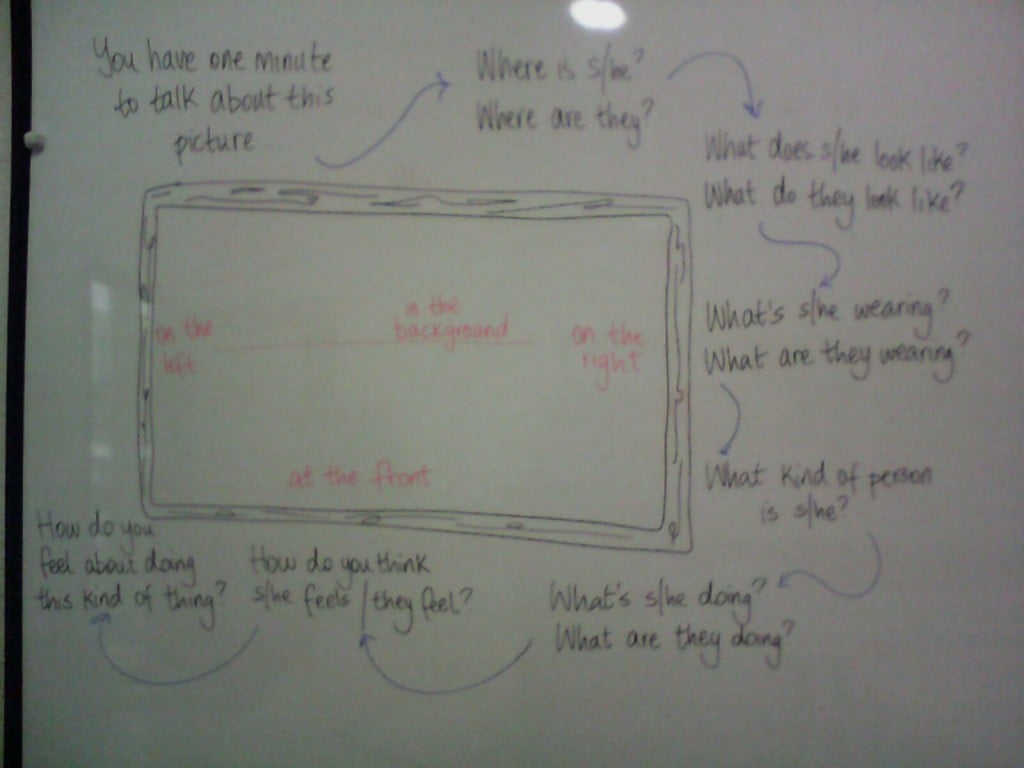Spot the difference
A couple of weeks ago, I was at the FECEI conference in Madrid and held a workshop called Engaging Exam Exercises. The first activity we practised was a picture description with a twist. I started doing this activity in my class for two reasons:
- to give learners a reason to listen to their partner’s description, which is a great opportunity for them to pick up new lexis and structures from peers
- to provide a model in the early stages so that learners were able to describe a picture well for a minute, without becoming repetitive
Tell learners to close their eyes and describe a picture to them, but make some changes. If you check out the slides in this post, see if you can spot the differences with the first picture.
I can see a girl who looks about 50. She’s wearing a black, long sleeved T-shirt and she’s got short, brown hair. She looks really happy and she’s holding a piece of paper that says, “4 intense weeks”. She’s in a building and I can see a plant behind her. There are also some pictures on the wall next to the plant and to the right there’s a big window. It’s daytime and it’s a really sunny day – you can see the sun coming in through the windows. I imagine she’s in a house and that she’s having a good time.
After you’ve modelled the task, put learners into pairs, A and B. A closes their eyes whilst B describes a picture; then A looks at the picture and tells B about the differences. In the next slide, you can see a model of the task with the sentence stems to help learners and on the third slide, instead of stems, there are the questions they should think about when describing the picture – giving them more autonomy and removing some of the scaffolding.
